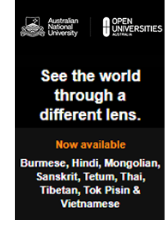As Southeast Asian countries pursue rapid economic development, many are doing irreparable damage to their environment and their most vulnerable citizens, Serina Rahman writes.
Across Southeast Asia, coastal areas are facing unprecedented threats from urbanisation, coastal development, and climate change. Moreover, decisions about how land in these areas is used are often made exclusively by those holding political power, who are far removed from the communities that will feel their impact.
As a result, land grabbing, community displacement, and damage to both the natural environment and traditional livelihoods are becoming more common.
One area where these effects are being keenly felt is between Peninsular Malaysia and Singapore in the western Tebrau Strait, also referred to as the Johor Strait, where a number of large infrastructure and industrial projects are underway. As well as being a site of rapid industrial development, the area is home to essential seagrass and mangrove ecosystems that are the major lifeline for local artisanal fishing communities.
In areas such as these, establishing a fully-protected marine park is rarely an option, as industrial and urban development is engraved in the area’s master plan and takes priority on the grounds of economic development. Marine parks can also exclude local communities, as fishing within its boundaries is prohibited.
Scenarios such as these are not uncommon across Southeast Asia, as governments across the region pursue economic development in order to move their citizens out of poverty. But as this industrialisation takes place, natural habitats and traditional livelihoods are often sacrificed in the name of ‘progress’.
The cruel irony is that the most vulnerable members of the community – such as the small fishing communities – are most affected by such changes.
Small-scale fisheries are estimated to make up 90 per cent of global employment in capture fisheries, where fish are caught in the wild. However, participation numbers in Southeast Asia are likely vastly underestimated as workers are often informal, unlicensed, or have supplementary jobs.
It’s these communities that are often the overlooked victims of coastal development projects, especially if they aren’t represented by an umbrella entity that can advocate on their behalf. Across the region, but especially in Southeast Asia’s more authoritarian countries, these marginalised communities have few options when it comes to resisting planning decisions.
However, efforts can still be made to find mutually beneficial solutions that can have positive outcomes for everyone and preserve what remains of precious natural habitats.
Finding these solutions requires the creation of platforms for discussion that bring together all local stakeholders. These platforms create avenues to ensure that all members of the community are heard and invested in the future economic and environmental success of coastal areas.
One potential solution that could be expanded at scale throughout the region is the establishment of ‘community-conserved’ areas. This is an innovation to the standard exclusionary marine park concept – which generally restricts nearly all human uses of an area – as it allows multiple uses of the seascape, yet works to ensure its sustainability and collaborative preservation.
An organisation this author works with, Kelab Alami, has had some success in its efforts to establish a community-conserved area in Johor, Malaysia. By working to bring developers as well as government agencies to the table with the local community and scientists, Kelab Alami has been able to highlight the importance and credibility of local knowledge – and established the fishermen as vital habitat experts whose views and inputs are invaluable to science and conservation.
Empowering the community through the recognition of their wisdom and expertise has also strengthened their voice in mobilising for their rights, and has enabled local youth to take ownership over documentation and research efforts for their seagrass, mangrove and island habitats, and resident fauna.
This local community now has a forum to engage with external entities, local and government agencies, and surrounding businesses and developers to ensure local participation and collaboration in spite of myriad institutionalised power hierarchies that traditionally make it harder for them to have a say in local decision-making. The focus of these platforms is not to apportion blame, but to find solutions and mitigate further damage.
The community-conserved areas concept has the potential to protect the natural environment and promote economic development.
First and foremost, it could help protect local fish stocks from industrial fishing activities, protecting the livelihoods of these small fishing communities. This can also give rise to other economic opportunities, such as the development of an ecotourism industry. In Johor, ecotourism has become a supplementary source of income for local fishermen – who have been employed as boat captains and facilitators in local habitat and fishing heritage tours.
T he United Nations Food and Agriculture Organization (FAO) has named 2022 the International Year of Artisanal Fisheries and Aquaculture. In doing so, the FAO noted that small-scale fisheries are the way forward in helping poor coastal communities climb out of poverty, ensuring the long-term sustainability of marine resources and reducing habitat damage.
he United Nations Food and Agriculture Organization (FAO) has named 2022 the International Year of Artisanal Fisheries and Aquaculture. In doing so, the FAO noted that small-scale fisheries are the way forward in helping poor coastal communities climb out of poverty, ensuring the long-term sustainability of marine resources and reducing habitat damage.
As such, it is essential that coastal development in Southeast Asia invests in innovative multi-stakeholder platforms. By bringing together everyone who is invested in sustainable development as equal partners in an authentic community, policymakers in the region can nurture inclusive solutions for the benefit of all.





 The 1MDB scandal and Malaysia’s 2022 general election
The 1MDB scandal and Malaysia’s 2022 general election
 Policing Malaysia’s maritime border
Policing Malaysia’s maritime border